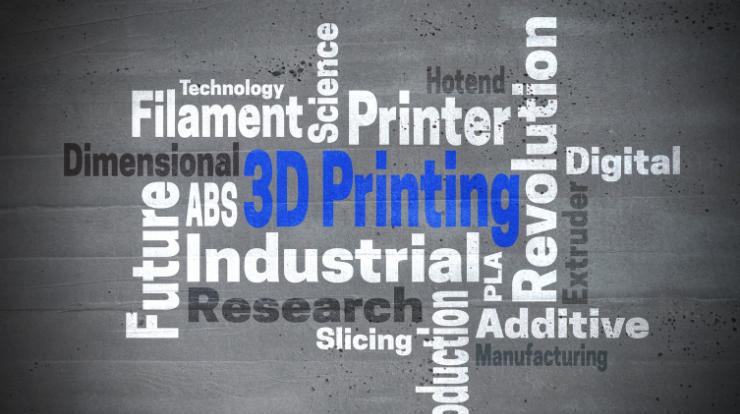3D Printing in Culture: Institutions’ Promotional Role
Cultural institutions, such as museums, galleries, and art centers, play a pivotal role in shaping the landscape of artistic expression and technological innovation. In recent years, the integration of 3D printing into the realm of contemporary art has presented new opportunities and challenges for these institutions. This article delves into the multifaceted role cultural institutions play in promoting and showcasing 3D printed art, examining the impact on artistic discourse, audience engagement, and the broader cultural landscape.
Introduction to 3D Printed Art in Cultural Institutions
The advent of 3D printing technology has ushered in a transformative era for artistic creation, enabling artists to push the boundaries of form, structure, and materiality. Cultural institutions have responded by embracing 3D printed art as a dynamic and innovative medium that intersects with traditional artistic practices, science, and technology. This section explores the introduction and integration of 3D printed art within cultural institutions.
Embracing Innovation in Artistic Expression
Cultural institutions, known for their commitment to fostering creativity and pushing the boundaries of artistic expression, have become early adopters of 3D printing technology. By actively seeking and showcasing 3D-printed artworks, these institutions position themselves at the forefront of contemporary artistic discourse, signaling a commitment to embracing innovation and exploring new frontiers in the arts.
Collaboration With Artists And Technologists
Cultural institutions foster collaboration between artists and technologists, creating a space for interdisciplinary dialogue and experimentation. By providing resources, expertise, and a platform for collaboration, these institutions empower artists to leverage 3D printing technology in groundbreaking ways, resulting in the creation of immersive and thought-provoking artworks.
Curatorial Strategies For 3D Printed Art
The curatorial process plays a crucial role in the successful integration of 3D printed art into the exhibition spaces of cultural institutions. This section explores the curatorial strategies employed to curate, interpret, and present 3D printed artworks to diverse audiences.
Thematic Exhibitions and Narrative Curation
Cultural institutions curate thematic exhibitions that highlight the diverse applications of 3D printing in art. These exhibitions often present a curated narrative, exploring themes such as technological innovation, the intersection of art and science, and the redefinition of traditional artistic practices. Narrative curation enhances the visitor’s understanding of the transformative potential of 3D printing in the artistic landscape.
Interdisciplinary Dialogue in Curation
Curators engage in interdisciplinary dialogue, collaborating with artists, technologists, and scholars to contextualize 3D printed art within broader cultural, historical, and technological frameworks. This approach enriches the curatorial process, fostering a deeper understanding of the artistic, scientific, and societal implications of 3D printed artworks.
Educational Initiatives And Audience Engagement
Cultural institutions serve as educational hubs, facilitating learning experiences that extend beyond traditional art forms. This section explores the educational initiatives undertaken by cultural institutions to engage audiences with the principles, processes, and significance of 3D printed art.
Workshops, Lectures, And Artist Residencies
Cultural institutions organize workshops, lectures, and artist residencies focused on 3D printing technology. These educational initiatives provide opportunities for the public to interact directly with artists and experts, gaining insights into the creative process and the technical aspects of 3D printing.
Educational Outreach And Inclusivity
In a commitment to inclusivity, cultural institutions extend educational outreach programs to schools, colleges, and community groups. By demystifying 3D printing and making it accessible to diverse audiences, these institutions foster a culture of technological literacy and artistic exploration.
Technological Infrastructure And Conservation Efforts
The integration of 3D printed art into cultural institutions necessitates robust technological infrastructure and conservation efforts. This section examines the role of institutions in developing and maintaining the necessary support systems for the exhibition and preservation of 3D printed artworks.
Technical Facilities And Expertise
Cultural institutions invest in state-of-the-art technical facilities equipped with 3D printing capabilities. These facilities may include advanced printing technologies, scanning equipment, and expert technicians who collaborate with artists to bring their visions to life.
Conservation Challenges And Solutions
Preserving 3D printed artworks presents unique conservation challenges due to the use of diverse materials and technologies. Cultural institutions engage in research and collaboration with conservators to develop best practices for the long-term preservation of 3D printed art, ensuring its cultural legacy endures.
Impact on Artistic Discourse And Cultural Landscape
The integration of 3D printed art within cultural institutions has a profound impact on artistic discourse and the broader cultural landscape. This section explores the ripple effects of showcasing 3D printed art, ranging from influencing artistic trends to shaping public perceptions.
Shaping Artistic Trends And Practices
Cultural institutions that embrace 3D printed art influence artistic trends by setting precedents for experimentation and innovation. This proactive stance encourages artists worldwide to explore the creative possibilities afforded by 3D printing, resulting in a broader and more dynamic artistic landscape.
Broadening Public Engagement With The Arts
Showcasing 3D printed art in cultural institutions broadens public engagement with the arts. Visitors, both enthusiasts and novices, are drawn to exhibitions featuring cutting-edge technologies, fostering a sense of curiosity and exploration. This increased engagement contributes to a more technologically literate and culturally aware society.
Conclusion
In conclusion, cultural institutions play a multifaceted and transformative role in promoting and showcasing 3D-printed art. Through embracing innovation, implementing effective curatorial strategies, fostering educational initiatives, developing technological infrastructure, and addressing conservation challenges, these institutions contribute to the vibrant intersection of art and technology. By doing so, they not only enrich artistic discourse but also shape the cultural landscape, paving the way for a future where 3D-printed art holds a central and celebrated position within the broader realm of artistic expression.














